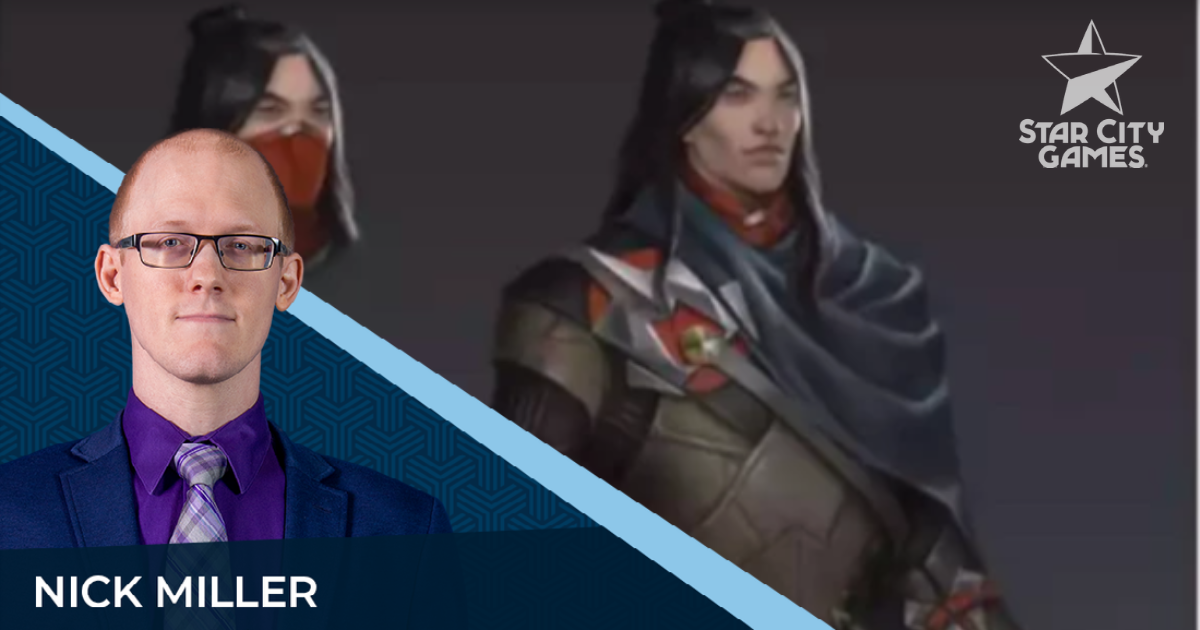Mercurius
Legend
A few years ago, Magic: the Gathering designer Mark Rosewater created the Rabiah Scale, which ranks Magic planes by likelihood to receive future sets of cards, from 1 (very likely) to 10 (very unlikely). With recent talk about Magic planes as settings, and whether or not WotC will increase the publication of Magic settings to one a year, I thought I'd revisit the question of the Rabiah Scale, and whether or not it has any bearing on which planes they choose to convert to D&D.
The latest rankings are:
1: Dominaria, Innistrad, Ravnica (2018)
2: Zendikar
3: Theros (2020)
4: Kaldheim
5: Alara, Amonkhet, Eldraine, Ikoria, New Phyrexia, Tarkir
6: Ixalan, Kaladesh, Regatha, Vryn
7: Fiora, Kamigawa, Kylem, Lorwyn-Shadowmoor, Shandalar
8: Muraganda, Segovia
9: Gobakhan, Mercadia, Phyrexia, Rath, Serra's Realm, Ulgrotha
10: Balblovia, Portal Three Kingdoms, Rabiah, Tolvada
Those in italics have received a Plane Shift article, while those in bold have already been published as settings.
Now obviously this is all speculative, but one would think that the Rabiah Scale has some bearing on the likelihood of conversion, if only because it implies future attention from WotC, and thus more exposure. And of course the two published so far are two of the five highest ranked, which implies that the Rabiah Scale means something.
My guess is that the next setting or two will be chosen from the 1-5 ratings, and that we can pretty much cross out any of the 8-10s. I know some have claimed that coverage as a Plane Shift makes it less likely, but I'm not so sure.
Meaning:
1-5: Strongest candidates - Dominaria, Innistrad, Zendikar, Kaldheim, Alara, Amonkhet, Eldraine, Ikoria, New Phyrexia, Tarkir.
6-7: Unlikely, but possible - Ixalan, Kaladesh, Regatha, Vryn, Fiora, Kamigawa, Kylem, Lorwyn-Shadowmoor, Shandalar.
8-10: Very unlikely - Muraganda, Segovia, Gobakhan, Mercadia, Phyrexia, Rath, Serra's Realm, Ulgrotha, Balblovia, Portal Three Kingdoms, Rabiah, Tolvada.
Within those categories, I suppose you could make little adjustments based upon other factors - whether it explores new territory, whether something similar has already been published (e.g. Innistrad and Ravenloft), how hard it would be to convert to the D&D rule set, etc.
In that first category, you could categorize them in a few groups:
Strongly influenced by real-world analogues: Kaldheim, Amonkhet, Eldraine, Tarkir
Unique/gonzo/quite different from D&D: Zendikar, Alara, Ikoria, New Phyrexia
Similar to already-existing D&D settings: Dominaria (because it is the most "vanilla"), Innistrad (Ravenloft)
The other groups can be similarly assigned (e.g. Ixalan, Kaladesh, and Kamigawa in the analogue group).
I'm not sure if this brings anything new to the table, but maybe it analyzes the planes in a way that at least we think in terms of those planes that are more or less likely to receive conversion.
Thoughts?
The latest rankings are:
1: Dominaria, Innistrad, Ravnica (2018)
2: Zendikar
3: Theros (2020)
4: Kaldheim
5: Alara, Amonkhet, Eldraine, Ikoria, New Phyrexia, Tarkir
6: Ixalan, Kaladesh, Regatha, Vryn
7: Fiora, Kamigawa, Kylem, Lorwyn-Shadowmoor, Shandalar
8: Muraganda, Segovia
9: Gobakhan, Mercadia, Phyrexia, Rath, Serra's Realm, Ulgrotha
10: Balblovia, Portal Three Kingdoms, Rabiah, Tolvada
Those in italics have received a Plane Shift article, while those in bold have already been published as settings.
Now obviously this is all speculative, but one would think that the Rabiah Scale has some bearing on the likelihood of conversion, if only because it implies future attention from WotC, and thus more exposure. And of course the two published so far are two of the five highest ranked, which implies that the Rabiah Scale means something.
My guess is that the next setting or two will be chosen from the 1-5 ratings, and that we can pretty much cross out any of the 8-10s. I know some have claimed that coverage as a Plane Shift makes it less likely, but I'm not so sure.
Meaning:
1-5: Strongest candidates - Dominaria, Innistrad, Zendikar, Kaldheim, Alara, Amonkhet, Eldraine, Ikoria, New Phyrexia, Tarkir.
6-7: Unlikely, but possible - Ixalan, Kaladesh, Regatha, Vryn, Fiora, Kamigawa, Kylem, Lorwyn-Shadowmoor, Shandalar.
8-10: Very unlikely - Muraganda, Segovia, Gobakhan, Mercadia, Phyrexia, Rath, Serra's Realm, Ulgrotha, Balblovia, Portal Three Kingdoms, Rabiah, Tolvada.
Within those categories, I suppose you could make little adjustments based upon other factors - whether it explores new territory, whether something similar has already been published (e.g. Innistrad and Ravenloft), how hard it would be to convert to the D&D rule set, etc.
In that first category, you could categorize them in a few groups:
Strongly influenced by real-world analogues: Kaldheim, Amonkhet, Eldraine, Tarkir
Unique/gonzo/quite different from D&D: Zendikar, Alara, Ikoria, New Phyrexia
Similar to already-existing D&D settings: Dominaria (because it is the most "vanilla"), Innistrad (Ravenloft)
The other groups can be similarly assigned (e.g. Ixalan, Kaladesh, and Kamigawa in the analogue group).
I'm not sure if this brings anything new to the table, but maybe it analyzes the planes in a way that at least we think in terms of those planes that are more or less likely to receive conversion.
Thoughts?



